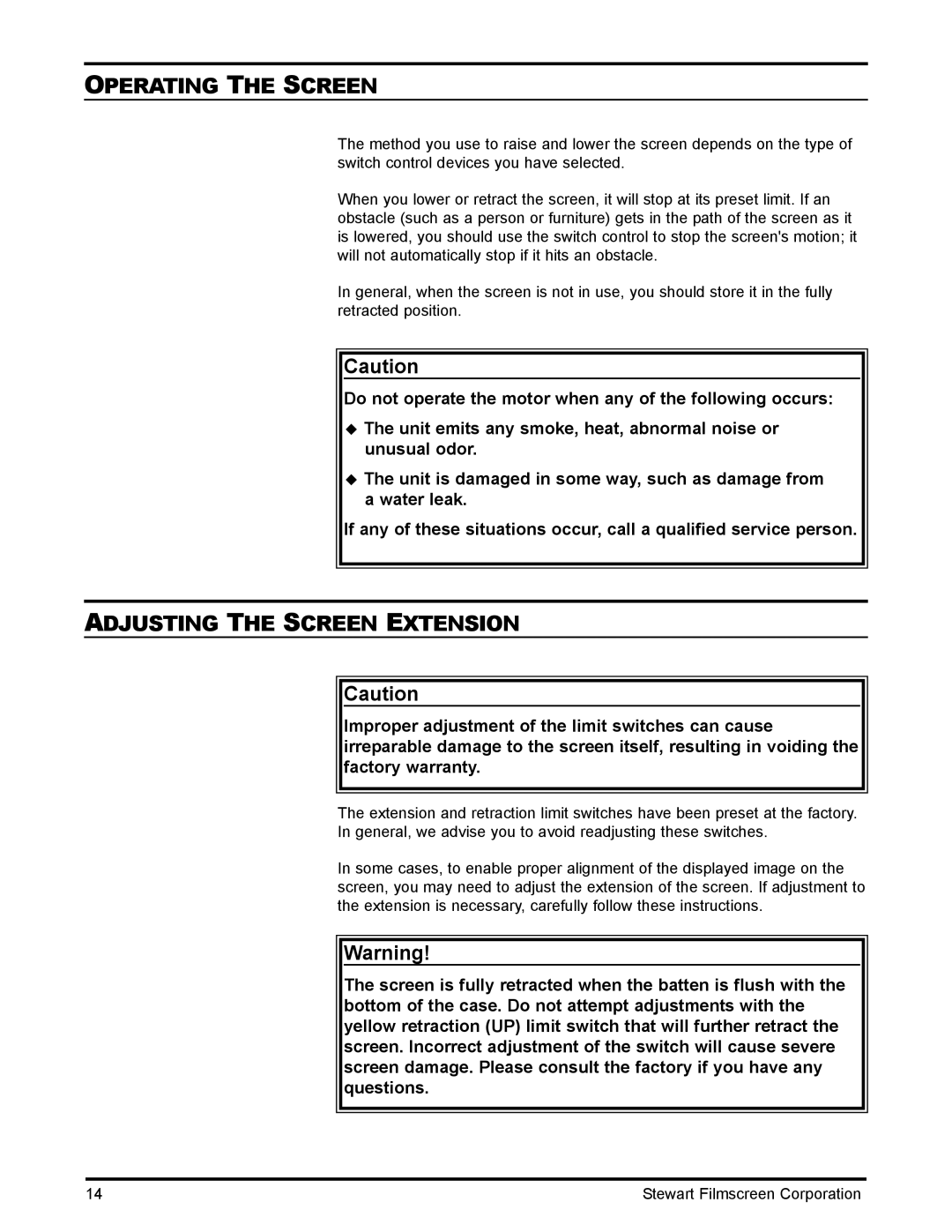
OPERATING THE SCREEN
The method you use to raise and lower the screen depends on the type of switch control devices you have selected.
When you lower or retract the screen, it will stop at its preset limit. If an obstacle (such as a person or furniture) gets in the path of the screen as it is lowered, you should use the switch control to stop the screen's motion; it will not automatically stop if it hits an obstacle.
In general, when the screen is not in use, you should store it in the fully retracted position.
Caution
Do not operate the motor when any of the following occurs:
The unit emits any smoke, heat, abnormal noise or unusual odor.
The unit is damaged in some way, such as damage from a water leak.
If any of these situations occur, call a qualified service person.
ADJUSTING THE SCREEN EXTENSION
Caution
Improper adjustment of the limit switches can cause irreparable damage to the screen itself, resulting in voiding the factory warranty.
The extension and retraction limit switches have been preset at the factory.
In general, we advise you to avoid readjusting these switches.
In some cases, to enable proper alignment of the displayed image on the screen, you may need to adjust the extension of the screen. If adjustment to the extension is necessary, carefully follow these instructions.
Warning!
The screen is fully retracted when the batten is flush with the bottom of the case. Do not attempt adjustments with the yellow retraction (UP) limit switch that will further retract the screen. Incorrect adjustment of the switch will cause severe screen damage. Please consult the factory if you have any questions.
14 | Stewart Filmscreen Corporation |
